
In 1872, John R. Foster, an engineer for the Philipsburg, Farnham & Yamaska Railway, presents his proposal for a new line that will run from Yamaska on the St. Lawrence River to Philipsburg near the American border. He makes a strong case to the municipal authorities by describing the economic and financial benefits of linking towns in the region to each other—and to the rest of North America—through this modern means of transport. For farmers, this railway link will mean daily access to markets in the region’s principal town, Saint-Hyacinthe. To further convince investors of the project’s profitability, Foster designs the railway tracks with a gauge of only 3 feet 6 inches. In that era, the standard gauge for railway track was 4 feet 8.5 inches. The Municipality of Saint-Paul-d’Abbotsford will invest $6,000 toward the completion of this project. On December 24, 1875, the new venture will be named the Lake Champlain & St. Lawrence Junction Railway. But the line will only be completed in 1881, and with Saint-Guillaume replacing Yamaska as the new terminal. From 1876 to 1880, the Lake Champlain & St. Lawrence Junction Railway will be the only company in southern Quebec to use this track gauge.
In his 1872 proposal, the engineer John Foster explains his choice of gauge for this kind of railway: “No doubt for some little time there was a prejudice against narrow gauge lines, but after a thorough investigation of their merits in Europe and America, the advantages shown to belong to them have crushed all opposition and they are being extended upon an enormous scale in the United States, in Europe and in Asia. The maintenance of the permanent way and repairs of rolling stock are all reduced in like proportion. Economy in every shape is therefore the recommendation of the narrow gauge line, equal security up to 30 miles an hour, and with the further advantage of placing the means of railway communication within the reach of numbers of districts that could never afford to pay for a broad gauge road.”
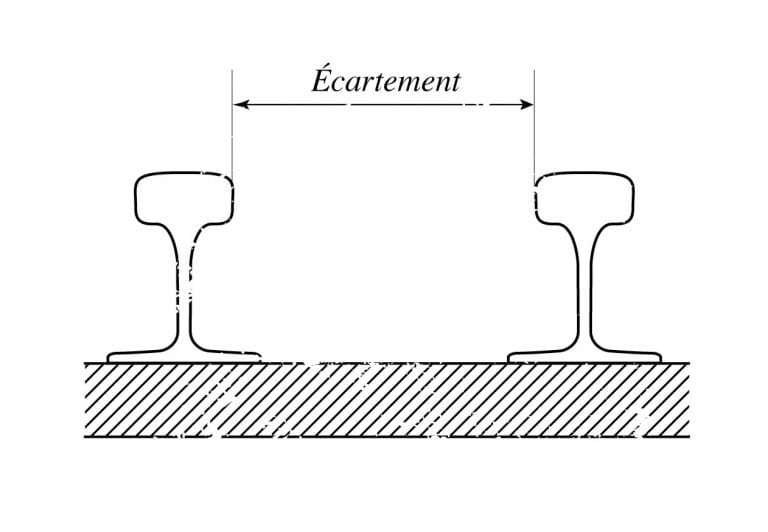
Track Gauge
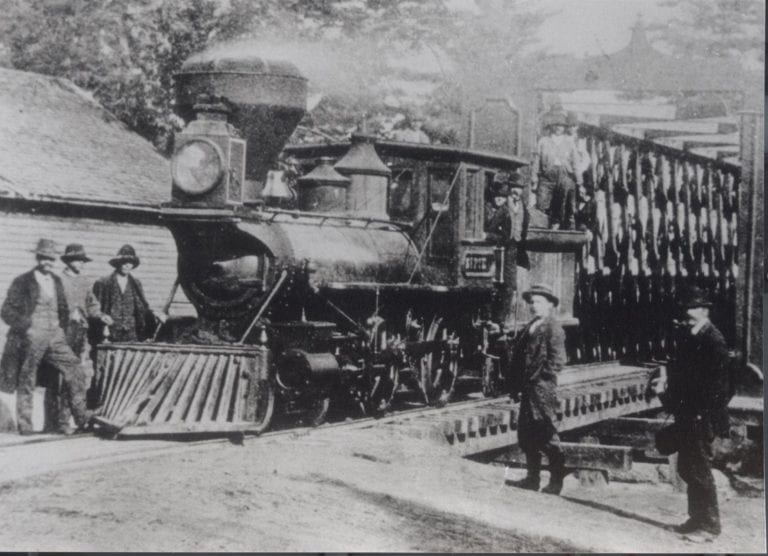
The steam locomotive St-Pie, built in 1876 for the Lake Champlain & St. Lawrence Junction Railway.
Since the railway has a track gauge of only 3 feet 6 inches, it will require locomotives and cars which have been adapted to this width. In 1876, the Lake Champlain & St. Lawrence Junction Railway orders its first locomotive from Canadian Engine & Machinery Works in Kingston, Ontario. The company will christen the engine the St-Pie. This locomotive, with its adapted cars, will shuttle between Saint-Pie and Saint-Hyacinthe, and as the railway line is extended, it will also travel further along the new sections of track. Afterwards, to complete the journey between the two terminals and meet the needs of its growing clientèle, the company will purchase, in 1878, a new locomotive of the same class and assign it the name of Abbotsford. In 1879, a third is purchased, the Bedford. Lastly, in 1880, a fourth engine joins the rolling stock, L’Ange-Gardien. These small steam engines are similar in design. Their boilers are fuelled by wood, not coal.
During 1879, faced with evidence of some major disadvantages, especially regarding the connections with other railways and the transfer of freight, the Lake Champlain & St. Lawrence Junction Railway begins adding a third rail to its tracks. Its four small locomotives will also be modified accordingly by Canadian Engine & Machinery Works in Kingston. When the South Eastern Railway takes control of the Lake Champlain & St. Lawrence Junction Railway in 1881, it will complete this work over the entire line.
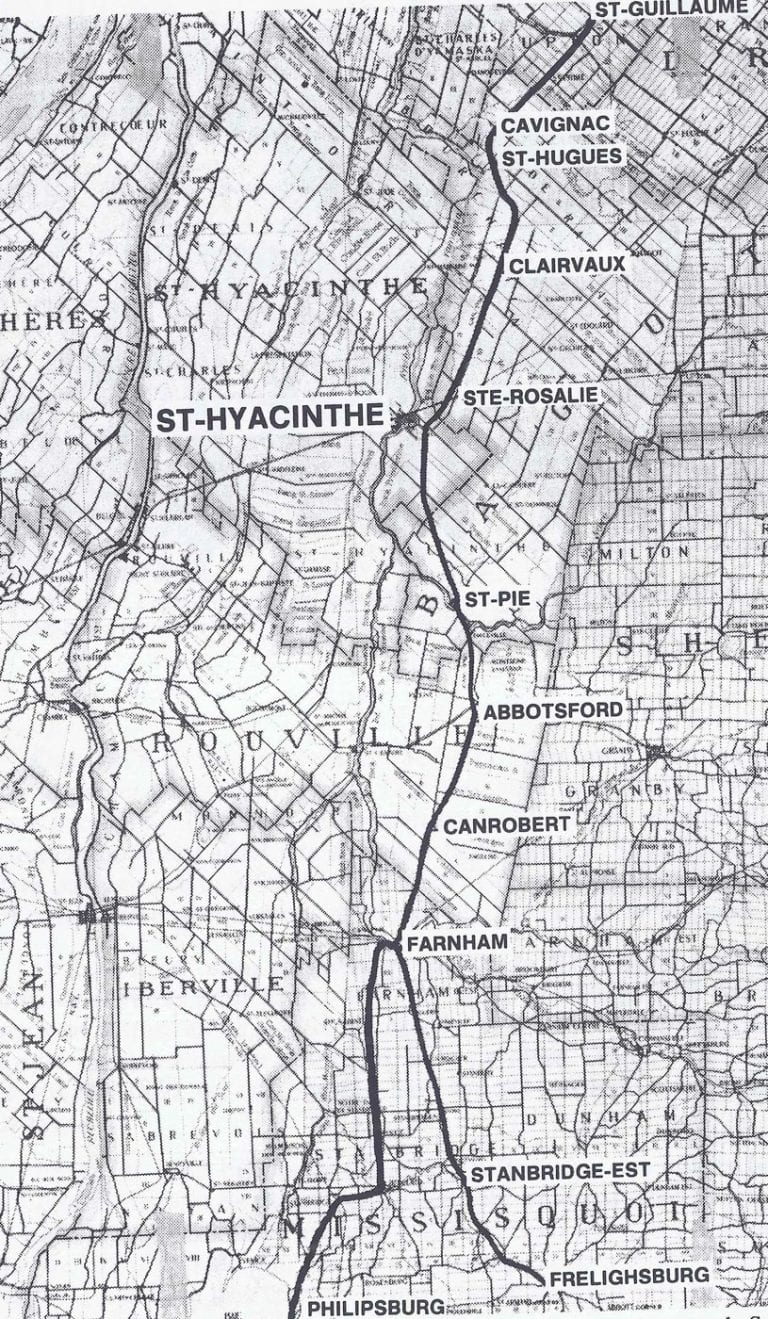
Map showing the route of the Lake Champlain & St. Lawrence Junction Railway.
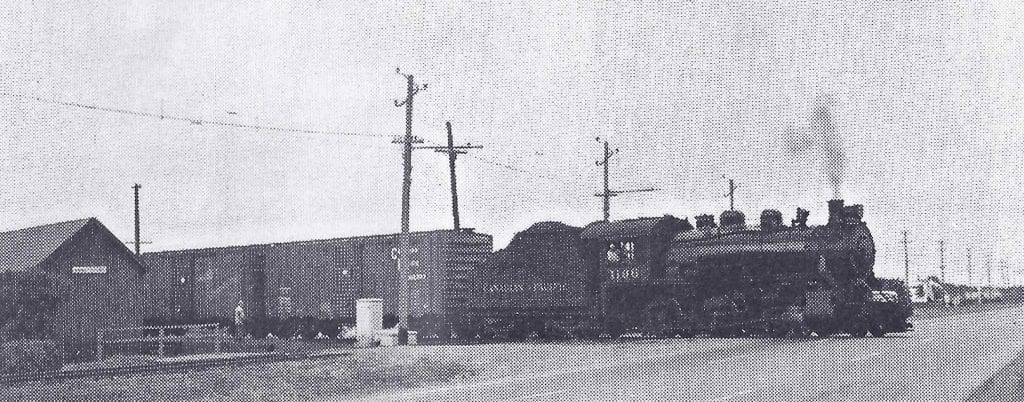
A freight train belonging to the Canadian Pacific Railway crosses Route No. 1 (now Route 112) on August 4, 1951. On the left, we see Abbotsford Junction Station, and parallel to the road, the gravel platform of the Montreal & Southern Counties Railway stop.
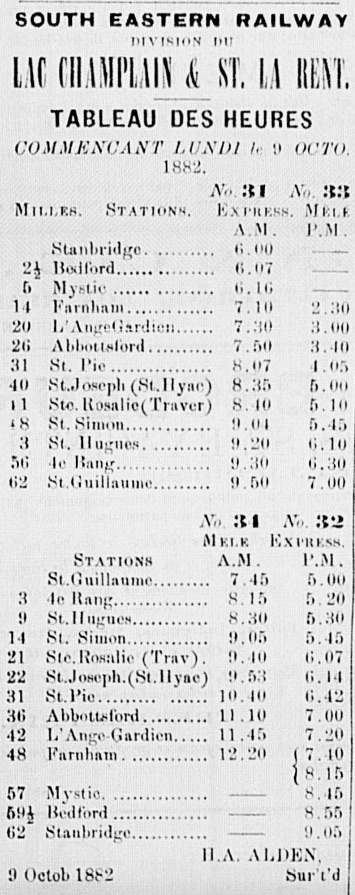
Train schedule for the Lake Champlain & St. Lawrence Junction Railway, October 9, 1882.
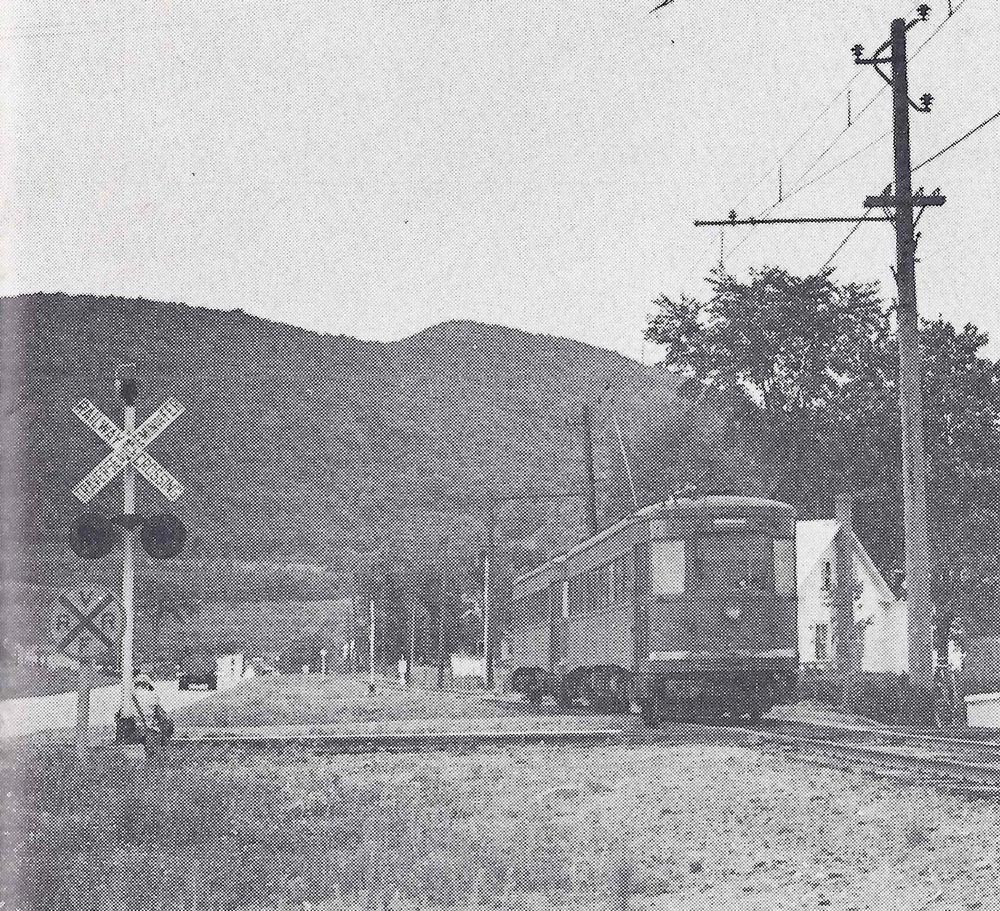
An electric train on the Montreal & Southern Counties Railway passes the intersection of two tracks at Abbotsford Junction on August 4, 1951.
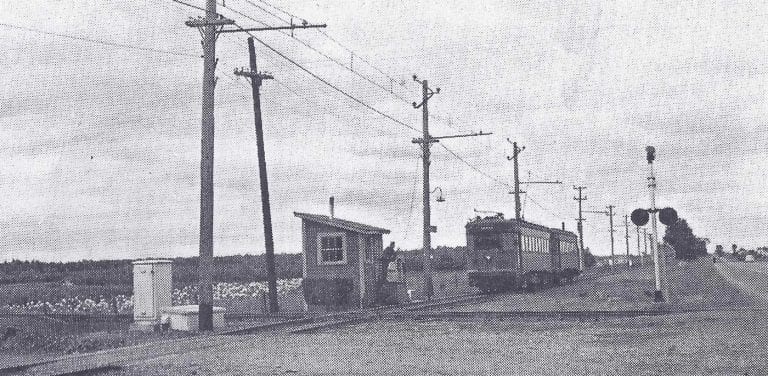
On August 4, 1951, after the train of the Canadian Pacific Railway has thundered by, the electric train of the Montreal & Southern Counties Railway can continue on its way to Saint-Paul-d’Abbotsford and Granby.
In 1903, the Canadian Pacific Railway becomes the owner of both the railway station and the tracks. It is a small rectangular station with a two-slope roof. Unusually, the platform is made of gravel, and the office of the station master does not have the typical bay window for viewing along the platform and down the track. Passenger service on this railway line will be discontinued around 1930, and only the express freight train will stay in operation. The line itself will be owned by several American companies in turn, before being finally abandoned in 2013.
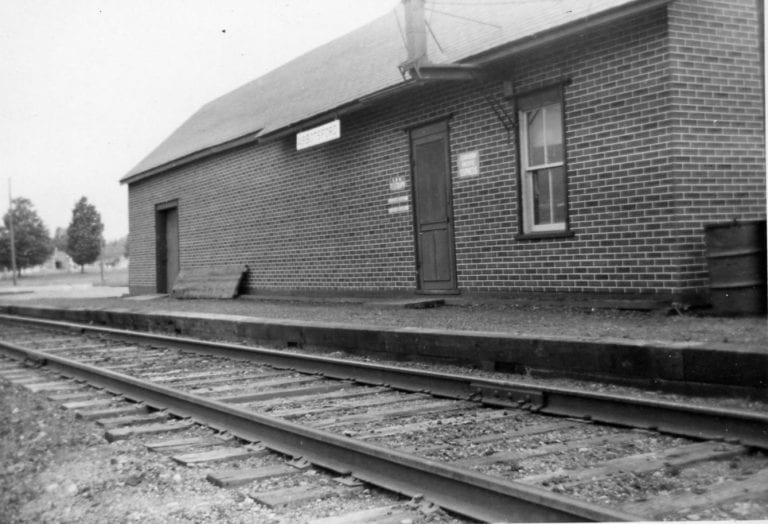
The station maintained by the Canadian Pacific Railway at Abbotsford Junction, where Route 112 and the railway line meet.
From the beginning of operations by Lake Champlain & St. Lawrence Junction Railway, there is a stop called Papineau at this location. This railway halt consists of a small platform and shelter alongside the tracks. It is used by farmers from Rang Papineau to transport farm products to the larger town markets of Saint-Hyacinthe and Farnham and to deliver forage crop production to customers in New England.
Location of the pannel on La Route des Champs


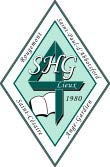
Research and text
Gilles Bachand, historian
Société d'histoire et de généalogie des Quatres Lieux
References and photographs (2020)
Archives of the Société d’histoire et de généalogie des Quatre Lieux
Archives of the Société d’histoire de la Seigneurie de Monnoir